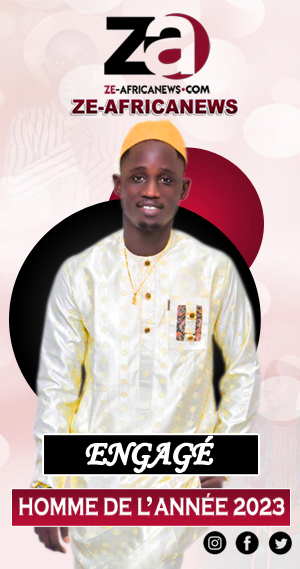Tété fly, Africafutur, WazalRock and Ova Tété. Four wonders of collections that never cease to seduce. We owe it to AYISSI NGA Joseph Marie aka Wazal Ayissi, creator of the brand Wazal and writer in his spare time. This young Cameroonian undeniable genius answers our questions:
How did you come to fashion? Why this choice?
I have always loved fashion since I was young. My father was a fashion designer. I wanted to follow his steps, bringing something different.
Where does the name Wazal come from?
The Wazal name is inspired by the Waza National Park, located in the far north of Cameroon. This park has always inspired me by the beauty of its wildlife. I was looking for a fierce animal that represents my image. So I added the L that represents the lion, which embodies beauty, respect and power.
What is the Wazal brand?
First, I only make unique pieces. My clothes are futuristic and modern, I am inspired by the dress codes of Ghanaians and Nigerians, but also sneakers and other shoes that have marked us in childhood.
What are the big events that have marked your career?
I was invited, among others, to the Fashion Night at the Elysee Palace, the Embassy of Cameroon in Paris by the Ambassador for an exhibition, for the Cameroonian Youth Day, in Switzerland to prepare my Africafutur collection, my last collection Ova Tété which was presented in Paris in the Marais.

Your collections have earned you a BEFFTA AWARDS nomination in London in 2016. What do you do?
This reward was for me a moment of great joy, because I did not follow a particular curriculum in the field of fashion. I am an autodidact, who since his childhood draws from different horizons to create. However, I had to follow a fashion training at the school VANESSA RUIZ in Paris. This allowed me to acquire knowledge of model molding and perfect my methods and techniques of work. Thanks to this training, I was able to improve my creations and better define my universe.

Scissors, you went to the pen …
I wanted to write, to tell a little story. However, I had to do it in an original way. I wanted my story to speak about my brand, what it conveys as an image, its origins. That’s why I made the decision to launch my comic book “The Legend of Wazal”.
What message do you want to convey through “The Legend of Wazal”?
The legend of Wazal is a reflection of the life of a stylist. Our passion always comes from something, from somewhere. Once you recognize that passion, you have to work on it, improve, listen to the advice of others, even if you do not always practice it. That’s how we grow up and gain wisdom. This is also how we fine tune the image and the message we want to convey.
 If you were to deliver a message, precisely to African youth, what would it be?
If you were to deliver a message, precisely to African youth, what would it be?
Live your passion despite the constraints. Nothing is simple but it is better to try, succeed or maybe fail, than to live with regrets. Feel free to train to perfect your skills and better master your art. Create your own network, meet people better placed in your field. Grow and stay informed about the trends in your business.
















































